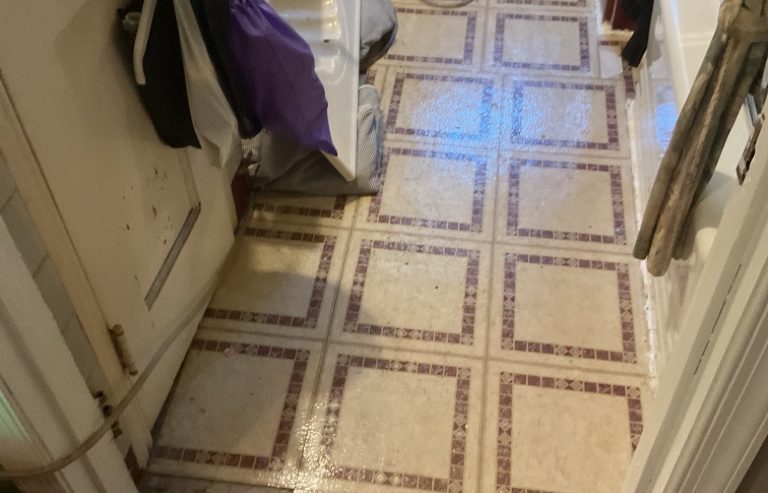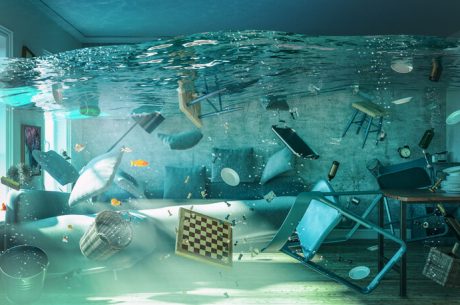PuroClean Emergency Recovery Services in New Jersey – (877) 750-7876
Water damage can strike your home or business at any time, and when it does, it’s crucial to respond swiftly to minimize the harm. Whether it’s due to a burst pipe, a leaking faucet, or heavy rainfall, water damage can wreak havoc on your property. The longer water sits, the more destruction it can cause. When you call in professionals to address water damage, you may encounter two essential services: water mitigation and water damage restoration. Understanding the difference between these two services is vital for effective recovery. In this article, we’ll delve into both methods, providing insights into their processes and dos and don’ts for handling water damage.
What Is Water Mitigation?
At its core, water mitigation is a service focused on preventing further water damage by promptly removing standing water and thoroughly drying affected areas. While property owners can take initial steps, such as removing belongings and enhancing ventilation, professional water mitigation is essential for a comprehensive approach.
Key aspects of the water mitigation process include:
- Removal of Affected Materials: This may involve clearing furniture, soft furnishings, flooring, beams, or drywall, depending on the extent of the damage.
- Utilizing Specialized Equipment: Commercial-grade equipment and specialized techniques are employed to extract water and expedite the drying process.
- Cleaning and Disinfection: Salvageable materials are cleaned and disinfected to restore their integrity.
- Protecting Property Integrity: Precautions like boarding up windows and doors are taken to safeguard the property against further damage.
Water mitigation primarily focuses on preventing additional consequences of water intrusion, such as mold growth or structural deterioration, rather than repairing or replacing damaged property.
What Is Water Damage Restoration?
Water damage restoration aims to repair and rebuild the effects of water damage, with the ultimate goal of restoring a home or business to its pre-damaged condition. This phase typically follows water mitigation.
The water damage restoration process typically encompasses:
- Replacing or Repairing Damaged Structures: This may involve flooring and walls, roof and ceiling components, and other structural elements.
- Cleaning and Disinfection: Thorough cleaning is conducted to remove contaminants and ensure a safe environment.
- Carpet, Rug, and Upholstery Cleaning: Specialized cleaning methods are employed to address water-damaged soft furnishings.
- Mold Prevention: Measures are taken to prevent mold growth, a common aftermath of water damage.
In essence, water damage restoration involves the restoration or replacement of damaged components within your residential or commercial property, a step beyond the scope of water mitigation.
The Dos and Don’ts of Water Damage
When faced with water damage, there are essential dos and don’ts to consider before professionals arrive to ensure your safety and the effectiveness of the restoration process:
The Dos:
- Switch Off Electrical Supply: Prioritize safety by turning off electrical power in affected areas.
- Shut Off Main Water Source: If the water damage results from a burst pipe or malfunctioning appliance, cut off the main water supply.
- Contact Professionals and Insurance: Reach out to water damage professionals and your insurance company as soon as possible.
- Protect Valuables: Safeguard valuables, artwork, furniture, rugs, and belongings by moving them to dry areas.
- Mop Up Excess Water: Act promptly to mop up as much water as possible to mitigate further damage.
- Lift Curtains: Prevent curtains from getting wet by looping them up over curtain rods.
- Ventilate Affected Spaces: Open closets, cabinets, drawers, windows, and doors to facilitate drying and ventilation.
- Document Damage: Take photographs to document the extent of water damage for insurance purposes.
The Don’ts:
- Avoid Entering Unsafe Areas: Do not enter rooms with electrical or structural damage until it is deemed safe to do so.
- Stay Clear of Contaminated Water: Refrain from coming into contact with gray or sewage water, as it may contain harmful contaminants.
- Avoid Placing Newspaper on Floors: Do not place newspapers on wet floors, as the ink can transfer and cause stains.
- Don’t Lift Tacked-Down Carpeting: Avoid attempting to lift tacked-down carpeting, as it may worsen the situation.
- Don’t Use Vacuums: Do not use regular household vacuums to remove water, as they are not designed for this purpose.
- Exercise Caution with Electrical Appliances: Never use electrical appliances while standing on wet floors or carpets.
- Avoid DIY Approaches: Water damage restoration is a job best left to professionals to ensure thorough and safe recovery.
Water Damage Mitigation and Restoration You Can Trust
At PuroClean Emergency Recovery Services in New Jersey, we bring decades of experience in water damage mitigation and restoration. Our expert team is dedicated to identifying the source of the water damage, minimizing further harm, and performing cleanup and restoration services.
We are available 24/7, ready to deploy with state-of-the-art equipment and proven techniques to address any water damage situation. Our priority is to expedite the restoration process efficiently, ensuring your home or business returns to normal.
For superior water damage services in your area, trust our friendly and reliable professionals. Contact us today at (877) 750-7876 for more information about our water damage mitigation and restoration services. Your safety and peace of mind are our utmost concern.




 PuroClean Emergency Recovery Services
PuroClean Emergency Recovery Services